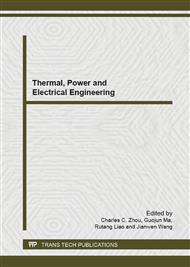p.1167
p.1171
p.1175
p.1179
p.1184
p.1188
p.1193
p.1197
p.1202
A Improved LVRT Control Strategy Based on Active and Reactive Power for Direct-Drive PMSG Wind Generation System
Abstract:
The structure of the uncontrolled rectifier + Boost circuit + PWM inverter is taken for direct-drive permanent magnet synchronous generator (PMSG) wind-power system. on the basis of the analysis for two different traditional control strategies for the grid side converter, a new control strategy Based on active and reactive power for the low voltage ride through running is proposed and described in detail. The simulation results verify that the given control strategy can be better to provide a reliable guarantee for the system low voltage ride through capability and to provide some reference for the actual control system design.
Info:
Periodical:
Pages:
1184-1187
Citation:
Online since:
August 2013
Authors:
Keywords:
Price:
Сopyright:
© 2013 Trans Tech Publications Ltd. All Rights Reserved
Share:
Citation:


